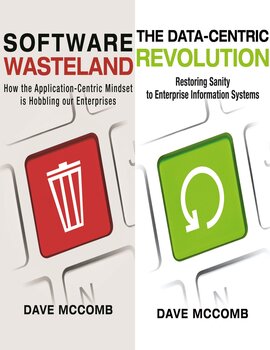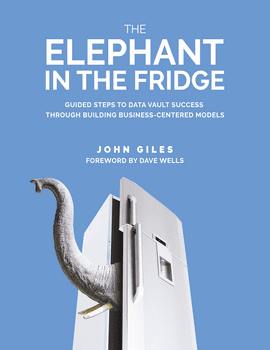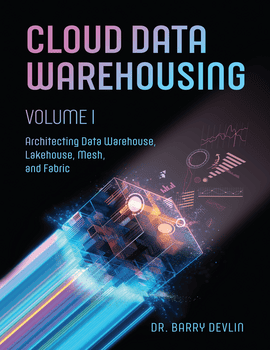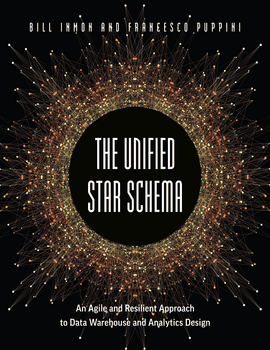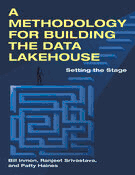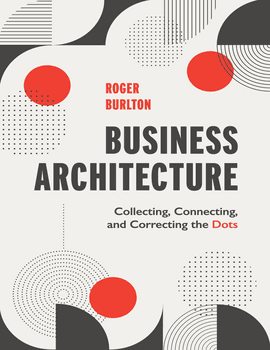Software Wasteland and The Data-Centric Revolution
A Duology by Dave McComb
The Data-Centric Revolution: Restoring Sanity to Enterprise Information Systems
Shift from application-centric to data-centric to enable your organization to develop more efficient and successful Enterprise Information Systems.
Software Wasteland: How the Application-Centric Mindset is Hobbling our Enterprises
Know what’s causing application development waste so you can turn the tide.
Topics
Software Wasteland Topics
CHAPTER 1: How bad is it?
Waste in the information systems industry
Industries that clean up the waste
A thought experiment on waste
How to spend a billion dollars on a million-dollar system
CHAPTER 2: The hidden levers driving waste
How to think about information systems resources
How information system costs really behave
CHAPTER 3: The application-centric mindset
Dependency
Redundancy
Complexity
Application centricity and complexity math
CHAPTER 4: Why what we’ve tried before hasn’t helped
Relational databases
ERP systems
Enterprise data modeling
Service-oriented architecture and APIs
Agile
Data warehouse and business intelligence
Outsourcing and offshoring
Cloud
Software as a Service (SaaS)
Data lakes
Machine learning and artificial intelligence
CHAPTER 5: How we stay trapped
Fallacy # 1: Detailed requirements
Fallacy # 2: Reinvent the wheel
Fallacy # 3: Construction analogy
Fallacy # 4: Estimation by analogy
Fallacy # 5: One neck to choke
Fallacy # 6: Portfolio management
Fallacy # 7: Not in the IT business
CHAPTER 6: The quagmire by sector
How the quagmire looks for government
The death and rebirth of the software industry
Two industries under siege
Outsourcing
Offshoring
The new platform vendors
How application centricity robs productivity
CHAPTER 7: Turning the tide
Assessment
Starting to extricate yourself
The Data-Centric Revolution Topics
Chapter 1: The Data-Centric Movement
This movement requires executive sponsorship
If you are not an executive
Chapter 2: What is Data-Centric?
Data-centric vs. Data-driven
We need our applications to be ephemeral
Data-centric is designed with data sharing in mind
The Data-Centric vision
Evolve-able
Specialize-able
Single but federated
Enterprise app store
Includes all types of data
The economics of the end game
Chapter 3: Getting There
What it requires
Inertial resistance
Overt and covert resistance
What it doesn’t require
This is a program, not a project
The transition requires discipline and consistency
The IT fashion industry
Is the Data-Centric approach a fad?
Can Data-Centric methods benefit from other fads?
From Fad Surfing to New Discipline
New modeling discipline
New delivery architecture
Chapter 4: Why We Need This Now
The status quo is getting exponentially worse
Code creates maintenance
Complexity creates high priests
Application-centricity creates silos
Silos create the need for integration
Legacy creates entrenchment
Inflexibility creates shadow IT
Mega projects create mega failures
Where application complexity comes from
A case example in complexity
Separation and isolation
Humans in the loop
The negative network effect
Complexity math and the way out of the quagmire
Chapter 5: A Deeper Look at Data-Centric Approaches
It’s the data, stupid
Task-centric is a trap
It’s the stupid data
The “what if” view on Data-Centric methods
Fewer models
Simpler models
Integration almost for free
More flexibility
Chapter 6: A Paradigm Shift
Paradigm shift
The original paradigm shift
How new ideas take hold
Round earth
Heavier than air flight
Scurvy
Hand washing before the germ theory
Non-linear change
Who is not going to help with your transformation?
Digital transformation
The herd
Social proof
Incentives
Chapter 7: Case Studies
S&P market intelligence
Sokil
Chapter 8: Linked Data
When Linked Data becomes Data-Centric
Separating meaning from structure
A single structure for expressing all data
Graph databases (triple stores) for structures
RDF Resource Description Framework
Global identifiers
Dealing with non-unique but unambiguous IDs
Self-assembling data
Resolvable IDs
Follow your nose
Querying a triple store
Linked data
Chapter 9: Ontologies and Knowledge Graphs
Metadata is triples as well
Formal definitions
Self-describing data
Schema later
Open world
Local constraints
Curated and uncurated data
Ontologies
Modularity and reuse
Self-policing data
Computable models
Integration with relational
Integration with big data
Natural language processing
Semantic standards stack
Chapter 10: Case Studies with Semantic Technology
Garlik
Montefiore
Chapter 11: Application Software is the Problem
Isn’t software a good thing?
How much code do we have?
How much do we need?
Where does it all come from?
Chapter 12: Data-Centric Means Massive Code Reduction
Reducing schema complexity
Reducing schema variety
Making possible massive reuse
Writing to a subset of the schema
Code reduction through integration elimination
Chapter 13: Model-Driven Everything
Model-driven development
Low-code and No-code
Declarative code
Model-driven constraints and validation
Model-driven Constraints
Model-driven UI
Model-driven identity management
Model-driven security
Chapter 14: Data-Centric and other Emerging Technology
Big data
Data lakes
Cloud
NLP
Rule-based systems
Machine learning
Microservices
Kafka
Internet of things
Smart contracts
Chapter 15: Assess Your Starting Point
Accessing your current situation
A small core
Getting to self-funding
Chapter 16: Executing Your Initial Projects
Think big and start small
Enterprise ontology
Gist as a starting point for your ontology
Pilots, not POCs
True contingencies
Corporate antibodies
Federated development
An enterprise knowledge graph
Chapter 17: Governance and the New Normal
The new approach becomes “hot”
The executive’s role in piloting the change
A kinder/ gentler voluntary governance structure
Good, better, best
TBox, CBox, ABox
Share the learning
Data-centric maturity
Chapter 18: Wrapping Up
About Semantic Arts
About the author
Software Wasteland
 This is the book your Systems Integrator and your Application Software vendor don’t want you to read. Enterprise IT (Information Technology) is a $3.8 trillion per year industry worldwide. Most of it is waste.
This is the book your Systems Integrator and your Application Software vendor don’t want you to read. Enterprise IT (Information Technology) is a $3.8 trillion per year industry worldwide. Most of it is waste.
We’ve grown used to projects costing tens of millions or even billions of dollars, and routinely running over budget and schedule many times over. These overages in both time and money are almost all wasted resources. However, the waste is hard to see, after being so marbled through all the products, processes, and guiding principles. That is what this book is about. We must see, understand, and agree about the problem before we can take coordinated action to address it.
The trajectory of this book is as follows:
- In Chapter 1, we explore how bad the current state is. The three industries that address software waste are discussed, including the legacy software industry, neo-legacy software industry, and legacy modernization industry. Examples of application waste are illustrated from both public and private sectors.
- In Chapter 2, we explore the economics of the software industry. Although the economic tradeoffs are changing at the speed of Moore’s Law, our approaches are not keeping pace. Learn how information systems really behave in terms of actual application development.
- In Chapter 3 we use “root cause analysis” to reveal the real contributors to this situation, which are dependency, redundancy, complexity, and application centricity.
- Chapter 4 recounts the many failed attempts we’ve made in the past to deal with information system complexity, including relational databases, ERP systems, enterprise data modeling, service oriented architectures, and APIs, Agile, data warehouse and business intelligence, outsourcing and offshoring, cloud, Software as a Service (SaaS), data lakes, machine learning, and artificial intelligence.
- Chapter 5 dismantles seven fallacies that contribute to our remaining stuck. For example, the first fallacy is “We need detailed requirements or we won’t get what we want.”
- The quagmire is not affecting all sectors of the economy equally. Chapter 6 looks at how this is playing out in the government and private sectors, large and small companies, and various parts of the IT industry itself.
- Chapter 7 outlines some action you can take now to begin to extricate yourself, including a detailed assessment and defining metrics for measuring and preventing software development waste.
The Data-Centric Revolution
 This book is the first part of a trilogy to follow Software Wasteland. In Software Wasteland, we detailed the current poor state of application software development. We offered some tactical advice for reducing some of the worse of the excess. This is the first book in the “what to do instead” trilogy.
This book is the first part of a trilogy to follow Software Wasteland. In Software Wasteland, we detailed the current poor state of application software development. We offered some tactical advice for reducing some of the worse of the excess. This is the first book in the “what to do instead” trilogy.
“Even if the thought of data modeling makes you cringe, Dave McComb’s latest book makes the case that it is a necessary exercise for the data-driven organization. The ‘Data-Centric Revolution’ shows how to be data-driven in an extensible, flexible way that is baked-into organizational culture, rather than taking a typical project-by-project approach. The book is a fun, insightful and meaty read, well-illustrated, and with endless wonderful examples.”
Doug Laney, Principal, Data & Analytics Strategy, Caserta, and author of the best-seller, “Infonomics: How to Monetize, Manage, and Measure Information for Competitive Advantage”
“Dave McComb has laid out a roadmap to travel the exciting path towards data centricity. Dave’s passion for semantic modeling is contagious and his expert advice will give you the motivation to rethink application development and the direction needed to deliver value in your organization with linked data.”
Nic Seyot, Executive Director, Information Management at a major investment bank
“In his new book, Dave teaches us why most of the stack we’ve spent decades trying to maintain is just a big, unmanageable pile of duplicative, inflexible code. He shows us how to collapse the stack and blend the logic and data each business needs to thrive, in one contextually rich, machine readable, dynamic, smart data layer. The bloated app and process layers of the stack go away, leaving a thin execution layer calling on the power of the smart data underneath. After ‘Software Wasteland’ explained the problem, ‘The Data-Centric Revolution’ articulates the solution.”
Alan Morrison, Sr. Research Fellow, New Services and Emerging Tech, PwC
From the age of punched cards to today’s internet-driven systems, one thing has stayed fairly constant: software vendors and their implementers have been driving the Enterprise IT industry. This is changing. It will be hard to see initially, but it’s already happening in some more prescient organizations.
As organizations realize they can take control of their own destiny by adopting data-centric principles, they will see their dependency on application software wither. The cost of running internal information systems will drop at least ten-fold, and the cost of integrating them will drop even more rapidly. This will decimate the $400 billion/ year application software industry and the $400 billion/year systems integration industry. The benefit will accrue to the buyers, and will accrue earliest to the first movers.
The trajectory of this book is as follows:
- Chapters 1 through 3 lay the data-centric foundation. Chapter 1 introduces the data-centric movement and the prerequisites that must be in place for success (including roles and responsibilities). Chapter 2 defines data-centric and explores a data-centric vision and approaches. Chapter 3 covers the management requirements in achieving a data-centric paradigm shift and reveals the new modeling discipline and delivery architecture.
- Chapters 4 through 6 explain the data-centric approach and its rewards. Chapter 4 summarizes why the data-centric approach will save incredible amounts of time and money. Chapter 5 explores various data centric approaches, and the underlying themes of flexibility and simplicity. Chapter 6 broadens the discussion of paradigm shifts and also discusses who will help you lead this data-centric approach.
- Chapters 7 through 10 discuss case studies and ways of organizing data. Chapters 7 and 10 discuss several case studies that have taken the data-centric approach. Chapter 8 explains linked data and semantic technologies, and Chapter 9 ontologies and knowledge graphs.
- Chapters 11 through 13 dig deeper into the pitfalls of the application-centric mindset and the benefits of the data-centric mindset. Chapter 11 gets to the root of the application-centric mindset: application software. Chapter 12 reveals the benefits of code reduction and Chapter 13 the benefits of the model-driven approach.
- Chapters 14 through 18 explain how to implement the data-centric paradigm. Chapter 14 explains how new technologies fit in with the data-centric approach. Chapters 15 and 16 cover how to get started. Chapter 17 explains the important role of governance in the data-centric approach. Chapter 18 summarizes the key takeaways.
About Dave
Dave McComb is the President and co-founder of Semantic Arts, a consulting firm that helps organizations uncover the meaning in the data from their information systems. For 18 years, Semantic Arts has helped firms of all sizes in this endeavor, including Procter & Gamble, Goldman Sachs, Schneider-Electric, Lexis Nexis, Dun & Bradstreet and Morgan Stanley. Prior to Semantic Arts, Dave co-founded Velocity Healthcare, where he developed and patented the first fully model driven architecture. Prior to that, he was part of the problem.
Faculty may request complimentary digital desk copies
Please complete all fields.
